2019 © OCCUPATIONAL HEALTH CLINICAL CENTER / 6712 BROOKLAWN PARKWAY, SUITE 204 / SYRACUSE / NY / 13211
PHONE: 315-432-8899 / FAX: 315-431-9528 / EMAIL: CNYOHCC@UPSTATE.EDU


NEW YORK STATE'S COSH MOVEMENT: A BRIEF HISTORY
New Solution: A Journal of Environmental and Occupational Health Policy 2018, Vol. 28(2) 202-226
Michael B. Lax, MD, MPH
Unions, health and safety activists, and professionals came together to create Coalitions for Occupational Safety and Health (COSH
groups) in a number of cities across the United States beginning in the 1970s. The COSHes have played an impor-tant and unique
role in advocating worker health and safety since that time, through activities including technical assistance, training and
education, and campaigns on workplace and public policies. In New York State, activist coalitions created eight COSH groups
distributed around the state. This paper presents a history of New York’s COSHes based on interviews with key participants. The
interviews shed light on the origins of the COSH movement in New York, the development and activities of the COSHes, and the
organizational trajectory of individual New York COSHes in response to both extra and intraorganizational challenges. Participants’
accounts of these issues may be useful for those seeking to sustain the COSH movement.
Click here to read full article
NOT QUITE A WIN–WIN: THE CORPORATE AGENDA OF THE STAY AT WORK/RETURN TO WORK PROJECT
The idea that efforts are necessary to transform the dominant framework of workplace safety and health in the United States, from
one of compensation and disability to one of stay at work/return to work (SAW/RTW) for workers injured or made ill on the job, has
become increasingly widespread. SAW/RTW advocates argue that everyone “wins” when unnecessary disability is reduced. Toward
this end, advocates have put forward a program and implemented a strategy with strong proponents among a coalition of
corporate-connected professionals. The seemingly obvious conclusions of their arguments bear closer critical scrutiny, however.
Addressing key questions—why injured workers do not SAW/RTW, who the coalition of SAW/RTW proponents includes, and what the
coalition proposes—reveals that the SAW/RTW approach mainly benefits employers and the corporate-connected advocates. These
assertions are detailed, and principles of an alternative approach that will serve the needs of injured workers are outlined.
By: Michael B. Lax, MD, MPH
View Publication>>
WORK, ENVIRONMENT, AND HEALTH
Breast cancer risk in relation to occupations with exposure to carcinogens and endocrine disruptors: a Canadian case-control study
By: James T Brophy, Margaret M Keith, Andrew Watterson, Robert Park, Michael Gilbertson, Eleanor Maticka-Tyndale, Matthias Beck,
Hakam Abu-Zahra, , Kenneth Schneider, , Abraham Reinhartz, Robert DeMatteo and Isaac Luginaah
View Publication >>
Occupational safety and health criteria for responsible development of nanotechnology
By: P. A. Schulte, C. L. Geraci, V. Murashov, E. D. Kuempel, R. D. Zumwalde, V. Castranova, M. D. Hoover, L. Hodson, K. F. Martinez
View Publication >>
OSHA NIOSH Hazard Alert: Worker Exposure to Silica during Hydraulic Fracturing
Although the hazards of silica dust has been known for hundreds of years, a recent federal investigation on fracking sites has found
very high levels of silica dust exposures to workers. This document includes the findings and recommendations to control silica dust
on fracking sites and other hazards in this industry.
View Publication >>
RECOGNITION, ASSESSMENT
Occupational Injury and Illness Surveillance: Conceptual Filters Explain Underreporting
By: Lenore S. Azaroff, Charles Levenstein, and David Wegman
View Publication >>
Participatory mapping of occupational hazards and disease among asbestos-exposed workers from a foundry and insulation
complex in Canada
By Keith MM, Brophy JT.
View Publication >>
HAZARDOUS EXPOSURES / ADVERSE HEALTH EFFECTS
Work-Related Spirometric Restriction in Flavoring Manufacturing Workers
By: Kathleen Kreiss, MD
View Publication >>
Occupational upper airway disease: how work affects the nose
By:V. Hox, B. Steelant, W. Fokkens, B. Nemery & P. W. Hellings
View Publication >>
Job Strain and Ambulatory Blood Pressure: A Meta-Analysis and Systematic Review
By: Paul Landsbergis, Marnie Dobson George Koutsouras and Peter Schnall
View Publication >>
PREVENTION
Ergonomic design and training for preventing work-related musculoskeletal disorders of the upper limb and neck in adults (Review)
By: Hoe VCW, Urquhart DM, Kelsall HL, Sim MR
View Publication >>
SOCIAL CONTEXTS
Effects of Social, Economic, and Labor Policies on Occupational Health Disparities
By: Carlos Eduardo Siqueira, Megan Gaydos, Celeste Monforton, Craig Slatin, Liz Borkowski, Peter Dooley, Amy Liebman, Erica
Rosenberg, Glenn Shor, & Matthew Keifer
View Publication >>
Economic Burden of Occupational Injury and Illness in the United States
By: J. Paul Leigh
View Publication >>
WORKERS' COMPENSATION RESEARCH
Reexamining Workers' Compensation: A Human Rights Perspective
By: Leslie I. Boden
View Publication >>
Workers' Compensation Benefits and Shifting Costs for Occupational Injury and Illness
By: J. Paul Leigh and James P. Marcin
View Publication >>
PUBLICATIONS


2019 © OCCUPATIONAL HEALTH CLINICAL CENTER / 6712 BROOKLAWN PARKWAY, SUITE 204
/ SYRACUSE / NY / 13211
PHONE: 315-432-8899 / FAX: 315-431-9528 / EMAIL: CNYOHCC@UPSTATE.EDU

NEW YORK STATE'S COSH MOVEMENT: A BRIEF HISTORY
New Solution: A Journal of Environmental and
Occupational Health Policy 2018, Vol. 28(2) 202-226
Michael B. Lax, MD, MPH
Unions, health and safety activists, and professionals came
together to create Coalitions for Occupational Safety and
Health (COSH groups) in a number of cities across the United
States beginning in the 1970s. The COSHes have played an
impor-tant and unique role in advocating worker health and
safety since that time, through activities including technical
assistance, training and education, and campaigns on
workplace and public policies. In New York State, activist
coalitions created eight COSH groups distributed around the
state. This paper presents a history of New York’s COSHes
based on interviews with key participants. The interviews
shed light on the origins of the COSH movement in New York,
the development and activities of the COSHes, and the
organizational trajectory of individual New York COSHes in
response to both extra and intraorganizational challenges.
Participants’ accounts of these issues may be useful for those
seeking to sustain the COSH movement.
Click here to read full article
NOT QUITE A WIN–WIN: THE CORPORATE AGENDA OF THE
STAY AT WORK/RETURN TO WORK PROJECT
The idea that efforts are necessary to transform the
dominant framework of workplace safety and health in the
United States, from one of compensation and disability to
one of stay at work/return to work (SAW/RTW) for workers
injured or made ill on the job, has become increasingly
widespread. SAW/RTW advocates argue that everyone “wins”
when unnecessary disability is reduced. Toward this end,
advocates have put forward a program and implemented a
strategy with strong proponents among a coalition of
corporate-connected professionals. The seemingly obvious
conclusions of their arguments bear closer critical scrutiny,
however. Addressing key questions—why injured workers do
not SAW/RTW, who the coalition of SAW/RTW proponents
includes, and what the coalition proposes—reveals that the
SAW/RTW approach mainly benefits employers and the
corporate-connected advocates. These assertions are
detailed, and principles of an alternative approach that will
serve the needs of injured workers are outlined.
By: Michael B. Lax, MD, MPH
View Publication>>
WORK, ENVIRONMENT, AND HEALTH
Breast cancer risk in relation to occupations with exposure to
carcinogens and endocrine disruptors: a Canadian case-
control study
By: James T Brophy, Margaret M Keith, Andrew Watterson,
Robert Park, Michael Gilbertson, Eleanor Maticka-Tyndale,
Matthias Beck, Hakam Abu-Zahra, , Kenneth Schneider, ,
Abraham Reinhartz, Robert DeMatteo and Isaac Luginaah
View Publication >>
Occupational safety and health criteria for responsible
development of nanotechnology
By: P. A. Schulte, C. L. Geraci, V. Murashov, E. D. Kuempel, R.
D. Zumwalde, V. Castranova, M. D. Hoover, L. Hodson, K. F.
Martinez
View Publication >>
OSHA NIOSH Hazard Alert: Worker Exposure to Silica during
Hydraulic Fracturing
Although the hazards of silica dust has been known for
hundreds of years, a recent federal investigation on fracking
sites has found very high levels of silica dust exposures to
workers. This document includes the findings and
recommendations to control silica dust on fracking sites and
other hazards in this industry.
View Publication >>
RECOGNITION, ASSESSMENT
Occupational Injury and Illness Surveillance: Conceptual
Filters Explain Underreporting
By: Lenore S. Azaroff, Charles Levenstein, and David Wegman
View Publication >>
Participatory mapping of occupational hazards and disease
among asbestos-exposed workers from a foundry and
insulation complex in Canada
By Keith MM, Brophy JT.
View Publication >>
HAZARDOUS EXPOSURES / ADVERSE HEALTH EFFECTS
Work-Related Spirometric Restriction in Flavoring
Manufacturing Workers
By: Kathleen Kreiss, MD
View Publication >>
Occupational upper airway disease: how work affects the
nose
By:V. Hox, B. Steelant, W. Fokkens, B. Nemery & P. W.
Hellings
View Publication >>
Job Strain and Ambulatory Blood Pressure: A Meta-Analysis
and Systematic Review
By: Paul Landsbergis, Marnie Dobson George Koutsouras and
Peter Schnall
View Publication >>
PREVENTION
Ergonomic design and training for preventing work-related
musculoskeletal disorders of the upper limb and neck in
adults (Review)
By: Hoe VCW, Urquhart DM, Kelsall HL, Sim MR
View Publication >>
SOCIAL CONTEXTS
Effects of Social, Economic, and Labor Policies on
Occupational Health Disparities
By: Carlos Eduardo Siqueira, Megan Gaydos, Celeste
Monforton, Craig Slatin, Liz Borkowski, Peter Dooley, Amy
Liebman, Erica Rosenberg, Glenn Shor, & Matthew Keifer
View Publication >>
Economic Burden of Occupational Injury and Illness in the
United States
By: J. Paul Leigh
View Publication >>
WORKERS' COMPENSATION RESEARCH
Reexamining Workers' Compensation: A Human Rights
Perspective
By: Leslie I. Boden
View Publication >>
Workers' Compensation Benefits and Shifting Costs for
Occupational Injury and Illness
By: J. Paul Leigh and James P. Marcin
View Publication >>
































